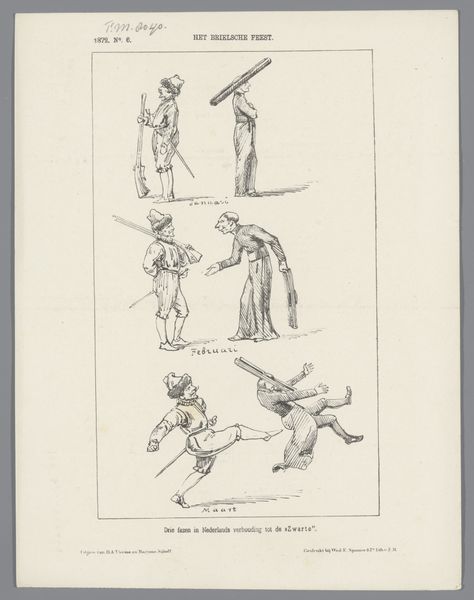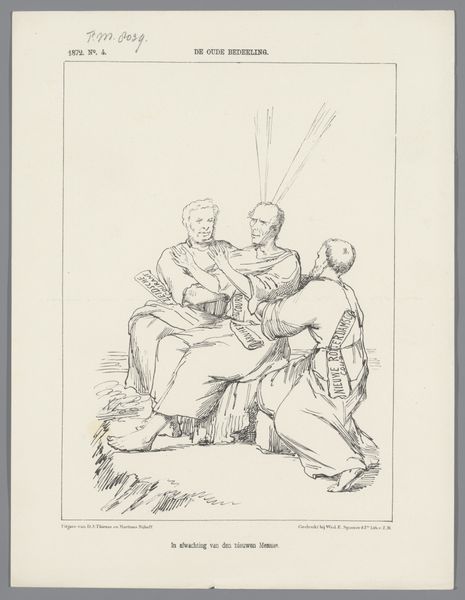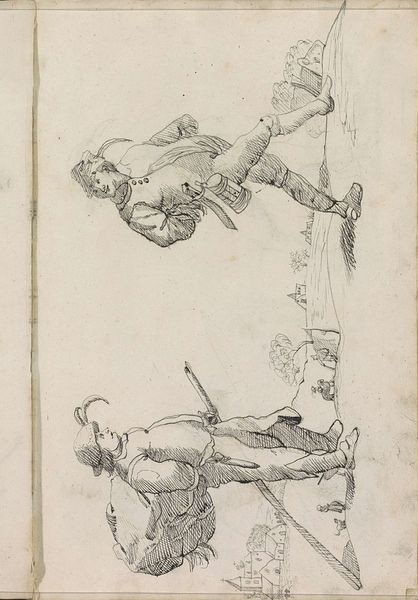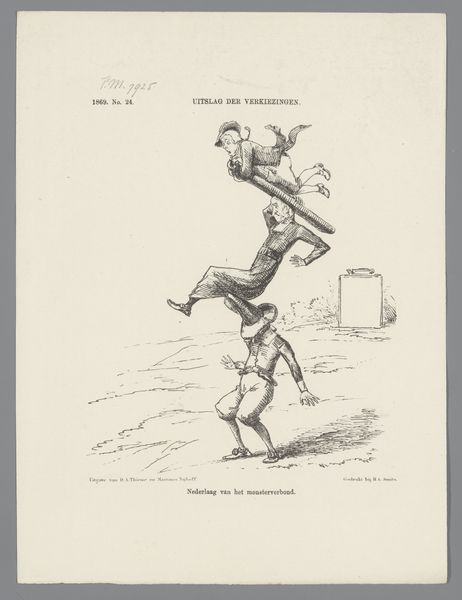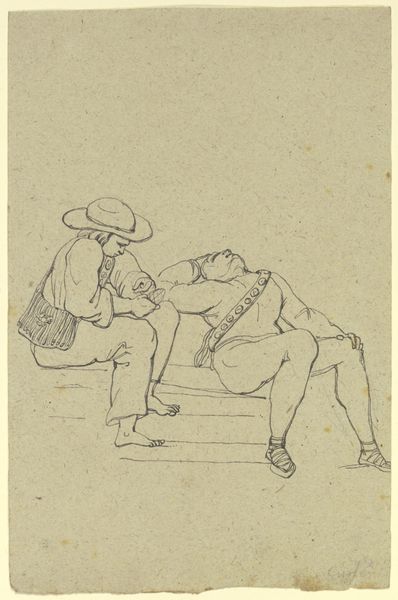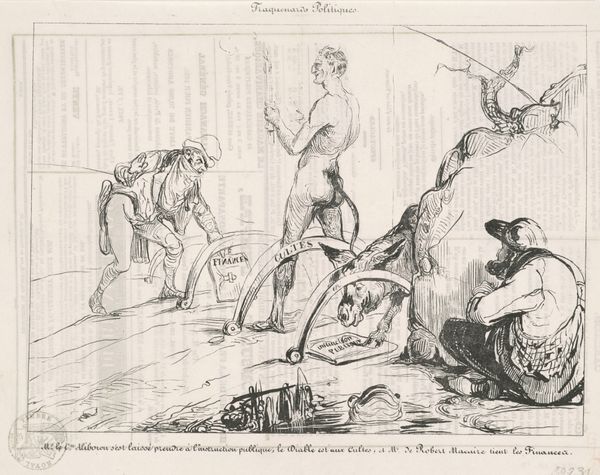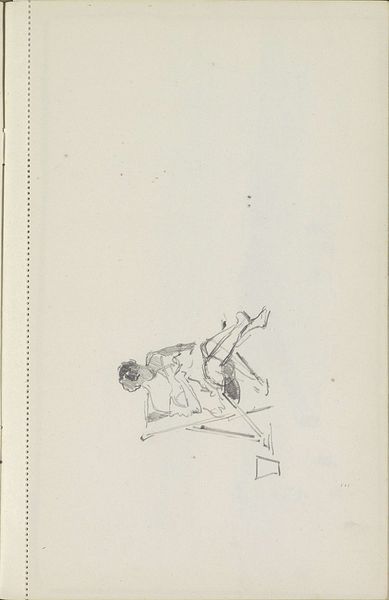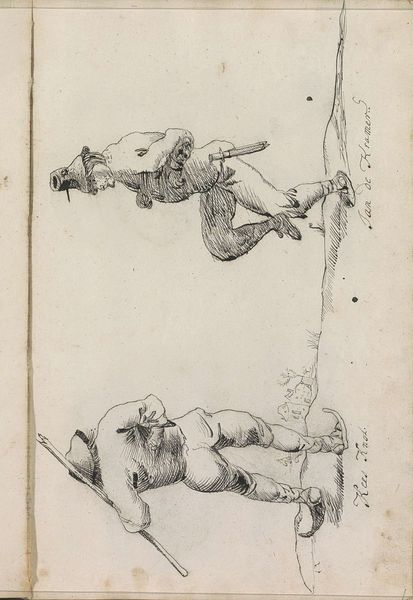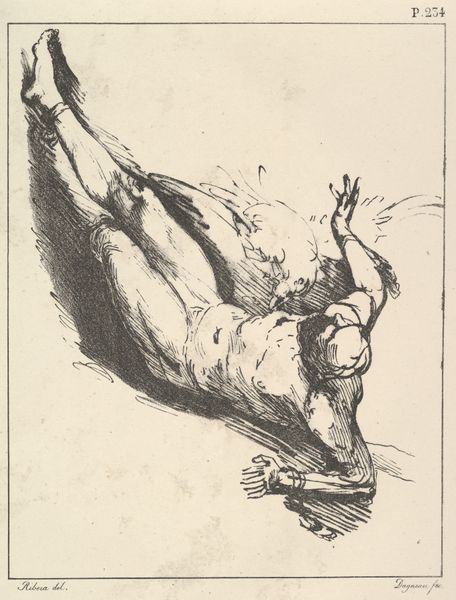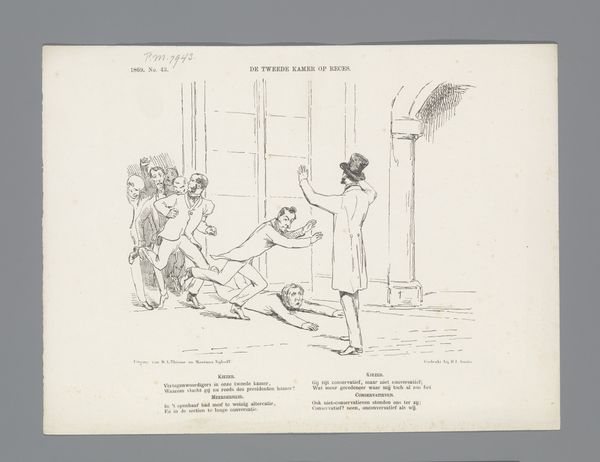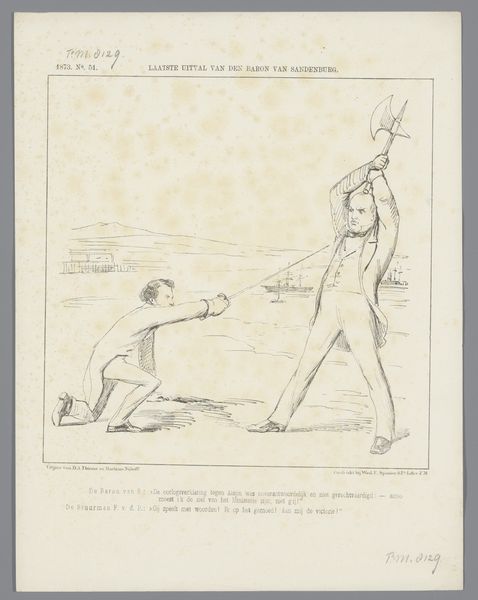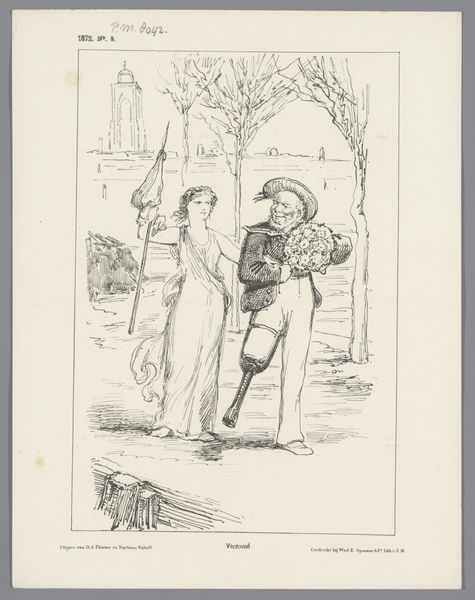
drawing, photography, pen
#
portrait
#
drawing
#
comic strip sketch
#
quirky sketch
#
caricature
#
sketch book
#
personal journal design
#
figuration
#
photography
#
personal sketchbook
#
idea generation sketch
#
sketchwork
#
sketchbook drawing
#
pen
#
cityscape
#
storyboard and sketchbook work
#
sketchbook art
#
modernism
Dimensions: height 275 mm, width 215 mm
Copyright: Rijks Museum: Open Domain
Curator: Look at this caricature from 1867, "Spotprent op Minister Van Bosse en het dagbladzegel" by Johan Michaël Schmidt Crans. It’s a drawing, primarily rendered with pen. It strikes me as rather bold. Editor: Bold is one word for it! The sketchiness amplifies a raw, almost visceral energy. A nude figure dominates the composition – about to hurl what appears to be a very large coin? It’s rather...confrontational, wouldn't you agree? Curator: Absolutely. Consider the political context: Minister Van Bosse was a key figure, and this “coin”, if you will, is the "dagbladzegel" – the newspaper stamp tax. So, we see the artist utilizing the symbolic image of a nude man preparing to throw that tax away from atop his platform! The tax itself had a contentious public reception. Editor: The nudity… that is pretty fascinating in this sociopolitical context. The nudity emphasizes his humanity – as a counterweight to the stamp. By posing the nude against figures below the platform looking on with curious eyes, does Schmidt Crans suggest how government measures feel oppressive to commoners? Curator: I would posit yes. His choice definitely makes it a potent visual commentary. Editor: The medium – a simple pen drawing – adds to its urgency. No polished oil paints here; just the immediacy of a sketch capturing a moment of heated public discourse. One imagines how this idea might start with the personal sketches found in many artists’ journals! Curator: Precisely. It reminds us that political cartoons were a powerful tool, reaching a broad audience and shaping public opinion during times of social change and in that time it shows continued resistance and the power of symbolic gestures in public life. Editor: It speaks volumes about the power of visual satire and art’s capacity to challenge the established order. Curator: A thought-provoking glimpse into the past through the critical lens of art. Editor: Indeed, it also makes us wonder: can images themselves become weapons of change?
Comments
No comments
Be the first to comment and join the conversation on the ultimate creative platform.
